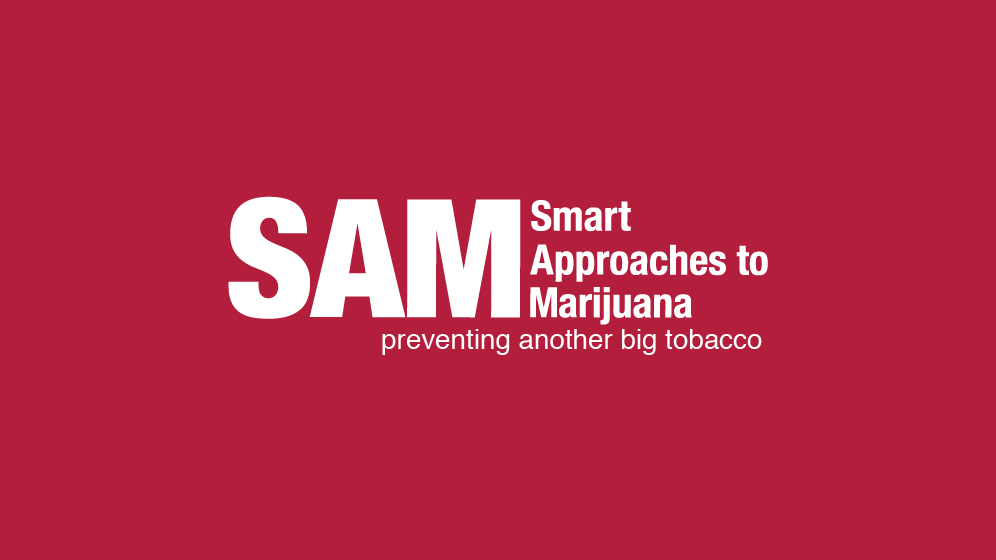
Today, the Colorado Department of Public Health and Environment (CDPHE) released their bi-annual “Monitoring Health Concerns Related to Marijuana in Colorado” report. The report finds there have been significant increases in past-month and daily or near-daily use among adults, marijuana-impaired driving, exposures in children under the age of five, and use of high potency forms of the drug among high school students.
Also, despite constant statements to the contrary, after an initial reduction in use, regular youth marijuana use among those under 15 rose 14.8% in 2019 versus 2017.
“This data is of great concern to those who prioritize public health over private profits,” said Dr. Kevin Sabet, president of Smart Approaches to Marijuana (SAM) and a former senior drug policy advisor to the Obama Administration. “Several years in, we are now seeing significant increases in high potency marijuana use among Coloradans and drastic developments in the perception of harm from use among young people. Use among younger kids also spiked this past year. We cannot afford to allow this trend to continue.”
According to the report, there were significant increases in the use of high potency concentrates among high schoolers in Colorado. Since the last release of this report, marijuana vaping among high schoolers rose 70 percent while the use of marijuana “dabs” has risen 49 percent. Among high school students who reported use of marijuana in the past month, the use of dabs saw a significant 156 percent increase.

Marijuana dabs and vaping oils commonly contain upwards of 80-99% THC, the main psychoactive chemical found in marijuana. Thousands of studies have shown the use of THC in young people is linked to many harms to mental health.
Studies have also shown higher potency marijuana to be more addictive, and younger users are more likely to develop a Cannabis Use Disorder (marijuana addiction). For this reason, SAM encourages states with “legal” marijuana markets to implement caps on THC potency.
According to CDPHE, there has been a dramatic increase in the annual frequency of accidental exposure of children (aged 0-5) to marijuana with a total of 37 reports in 2016 versus 95 in 2019. The number of accidental exposures in 2019 represents the highest such total to date. Marijuana edibles (which are abundantly found in kid-friendly forms) account for the largest proportion of marijuana exposures.
In a similar vein, the report found that since 2017, emergency department discharges with marijuana-related billing codes among children aged 0-9 years saw a significant, 66 percent increase.
Since the release of 2017 data, daily or near-daily use among Colorado adults has increased 20 percent (7.6 percent in 2017 versus 9.1 percent in 2019), and nearly half (48.2 percent) of adult marijuana users in the state consumed the substance on a daily basis. This is concerning as daily use of today’s higher potency marijuana has been shown to increase the risk of developing severe mental illness such as psychosis up to fivefold.
Adult use is especially problematic as seen in recent research from this week published in the Journal of American Medical Association finding negative neuropsychiatric symptoms in THC users over 50.
Since the implementation of the commercial market in 2014, the report found that marijuana use among Colorado adults has risen 40 percent.
In 2019, past-month marijuana use among high school students (20.6 percent) remained lower than past-month alcohol use but was significantly higher than past-month use of cigarettes (5.7 percent) and illicit prescription drugs (6.9 percent).
When it comes to one of the more concerning trends associated with marijuana legalization as it pertains to public safety, the CDPHE report found that marijuana-impaired driving has increased 40 percent since the implementation of commercialization in 2014. This report comes on the heels of a news report that marijuana-related DUI’s in Colorado have increased 48 percent in the last year.
Furthermore, the report found a significant, 24 percent increase in high school students admitting to driving a vehicle after recently consuming marijuana in the past month. In 2019, the rate of high schoolers driving a vehicle after consuming marijuana (11.2 percent) remained significantly higher than that of high schoolers driving after alcohol use (5.9 percent).
The report also found that around 4.9 percent of postpartum-currently breastfeeding mothers in Colorado were consuming marijuana. This is concerning as research has found THC to be present in a mother’s breastmilk up to six days after consuming marijuana.